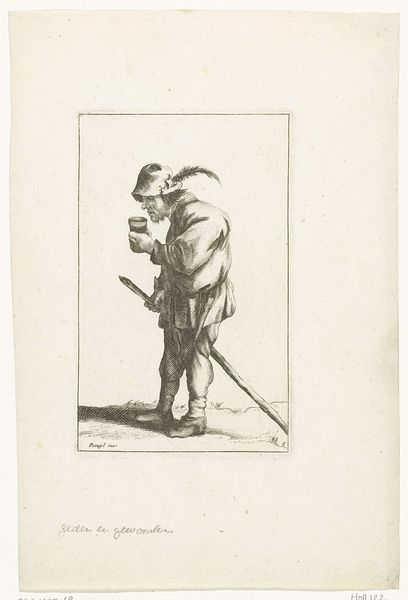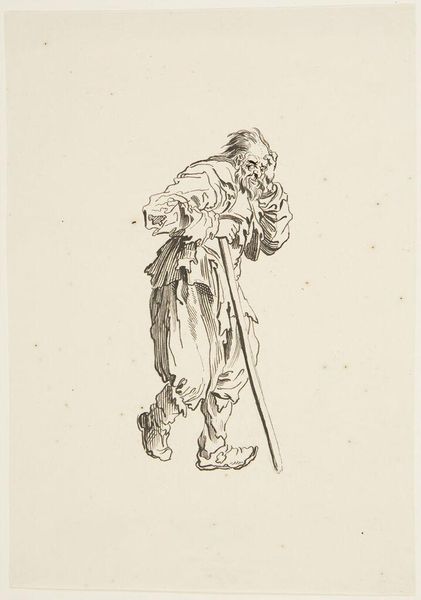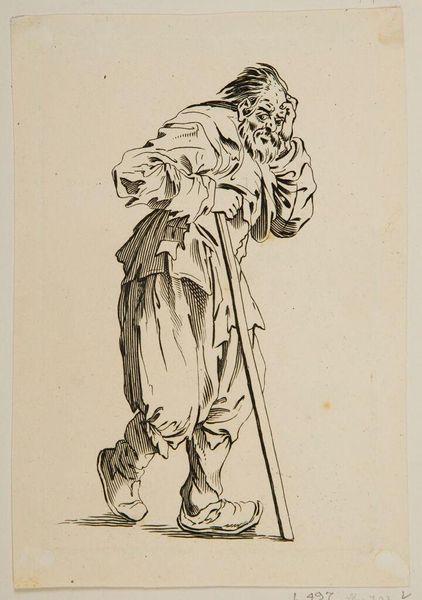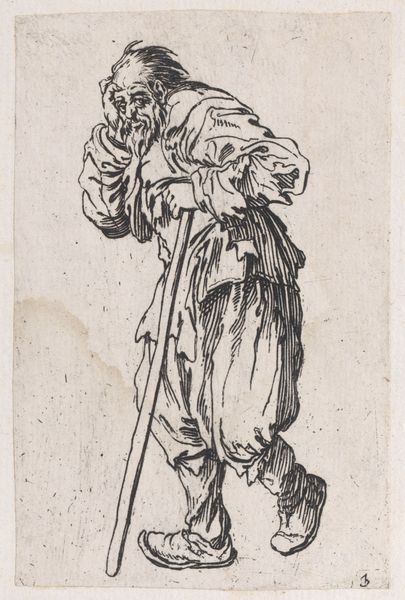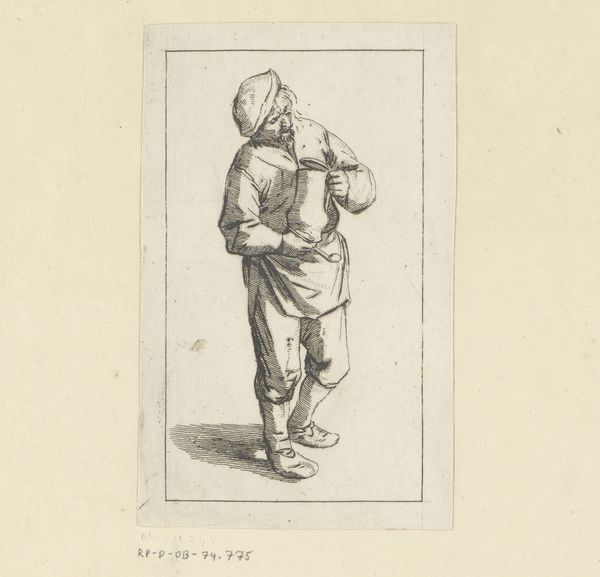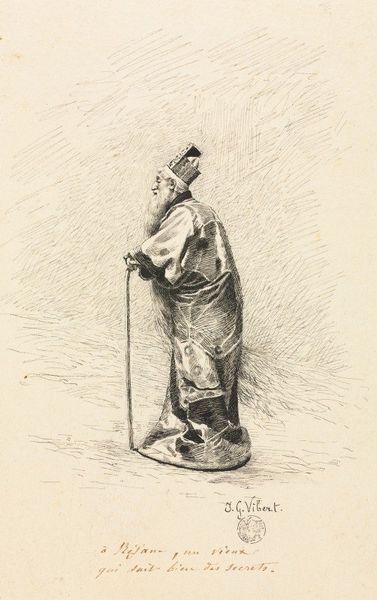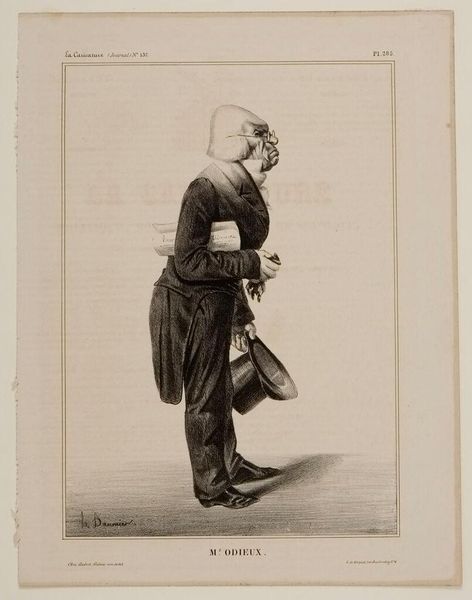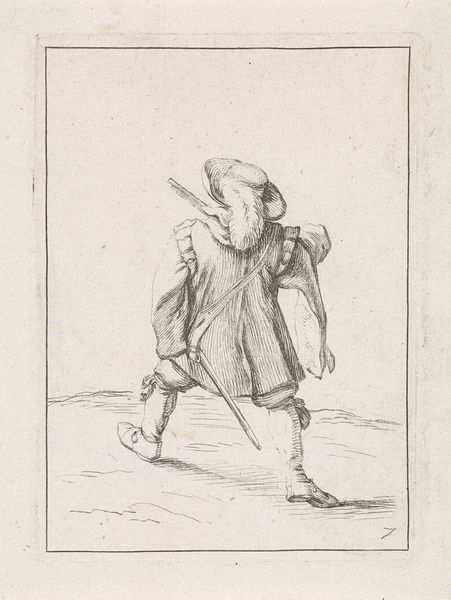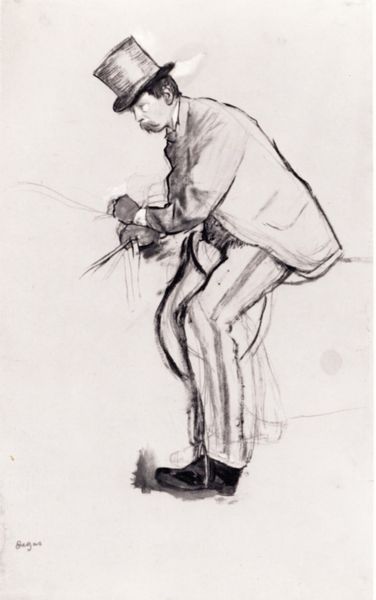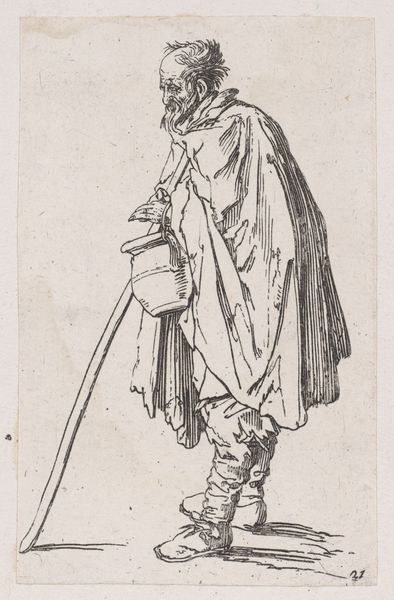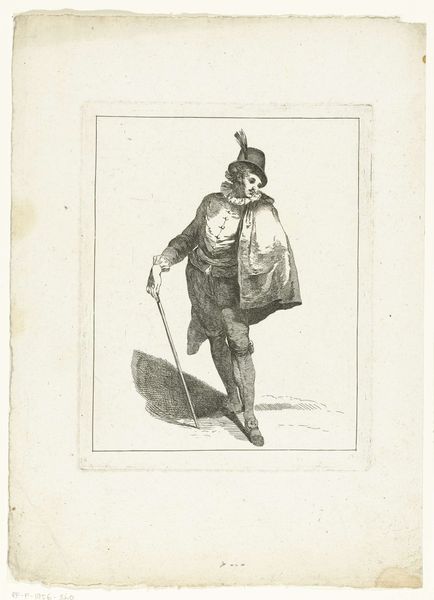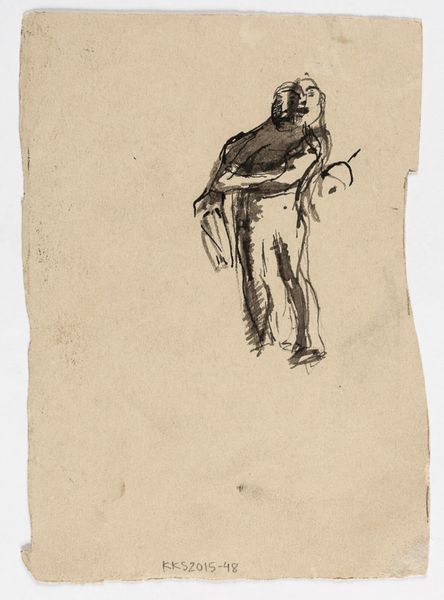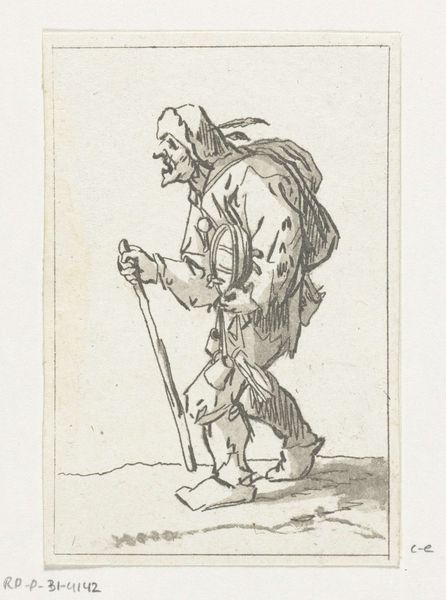
drawing, etching, ink, wash
#
portrait
#
drawing
#
narrative-art
#
etching
#
caricature
#
figuration
#
ink
#
romanticism
#
wash
Copyright: Public Domain: Artvee
Curator: Welcome. We are looking at Francisco de Goya’s ink wash drawing from between 1819 and 1823 entitled "He Can No Longer at the Age of Ninety-Eight." Editor: It’s strikingly bleak. The curve of the figure, the grayscale wash… it speaks to fragility and decline. It feels… profoundly sad. Curator: Indeed. Goya has distilled the figure down to its essence: a hunched back, supported by two canes. Notice how the wash is applied in broad strokes, concentrating the darkness around the figure's head and shoulders, emphasizing the weight they bear. Editor: And it feels vital to acknowledge the historical context of Goya’s piece. Ninety-eight years old in the 19th century represented a demographic of survivors who battled inequality, social upheaval, famine, and war, many with limited to no access to health resources or other societal safety nets. How does knowing more about these societal factors inform our understanding of this art piece? Curator: Excellent point. Seen in this light, we can analyze the art on multiple dimensions. While we consider this art piece using our personal contexts, we can look more broadly to the piece's biographical background that captures Goya’s response to the Restoration of the Bourbon monarchy. Its stark depiction of aging becomes not just personal, but a broader commentary. Editor: It transforms from a simple depiction of old age to a potent statement on the human condition, inflected by political and societal turmoil. The posture says so much: perseverance, struggle, perhaps even the futility of resisting larger societal forces. I'm also struck by how little detail Goya uses to convey such profound emotion. The medium, the stark wash…everything contributes to the feeling of somber reflection. Curator: A masterful execution using the visual components. Through his art we recognize a composition demonstrating visual reduction, where essential details capture meaning through symbolic language. We get at its core elements by understanding structure, tone, line, form, and balance. The overall visual language uses reduction to evoke contemplation. Editor: Well said. Goya offers us not just a portrait but a powerful meditation on resilience in the face of decline, deeply entrenched inequality, and the enduring human spirit. Curator: It truly resonates, transcending the ages.
Comments
No comments
Be the first to comment and join the conversation on the ultimate creative platform.
